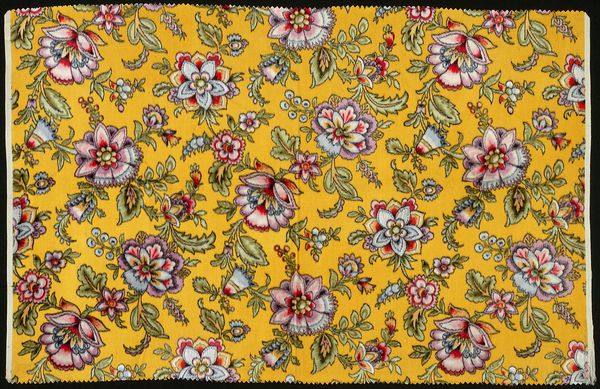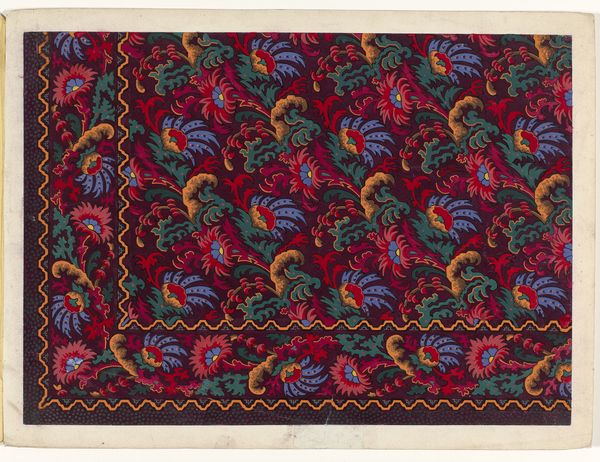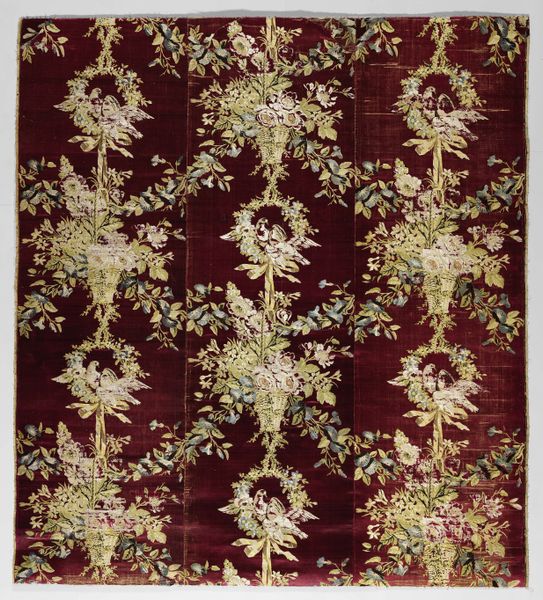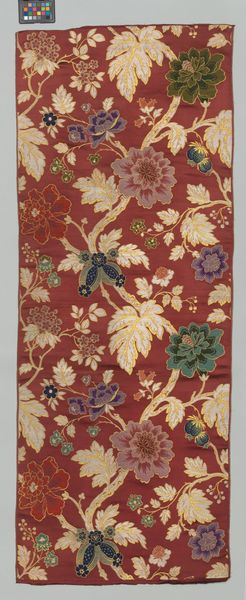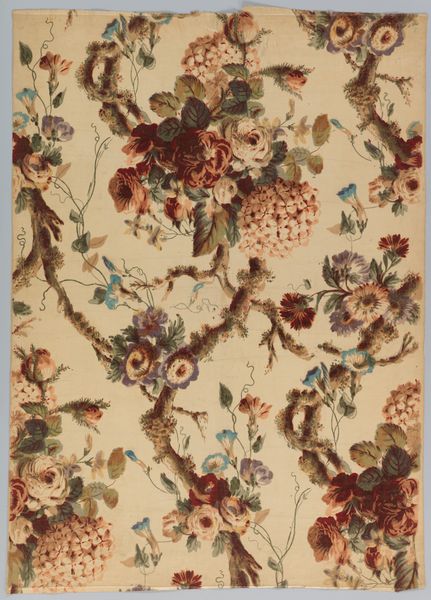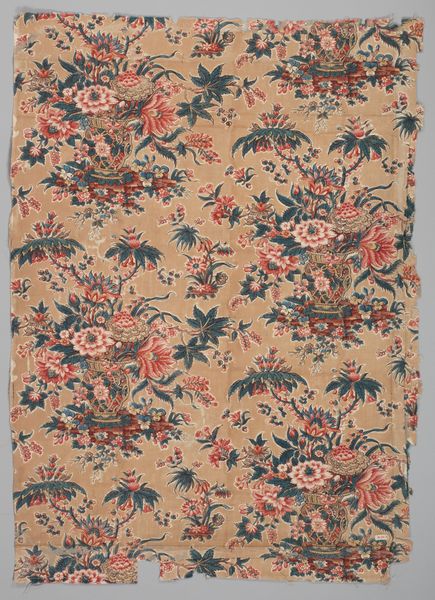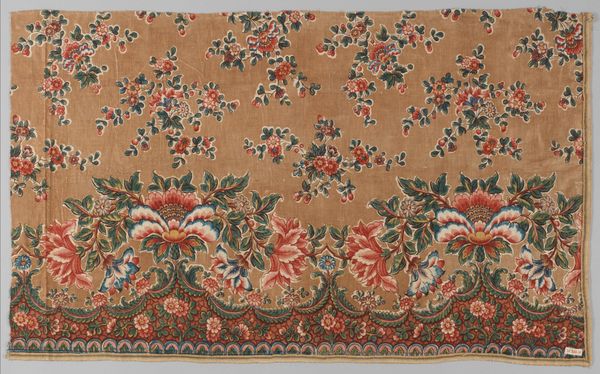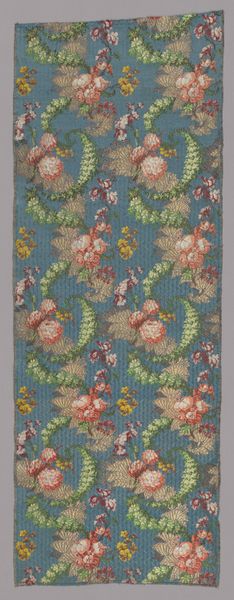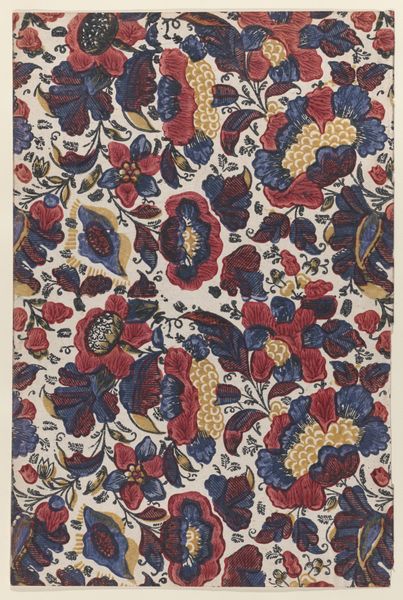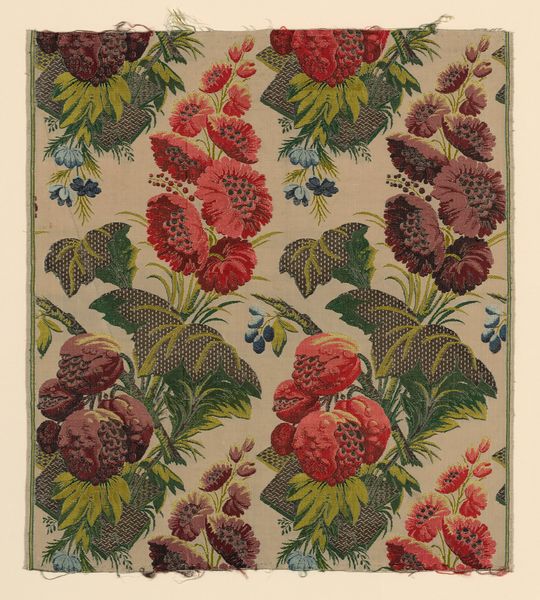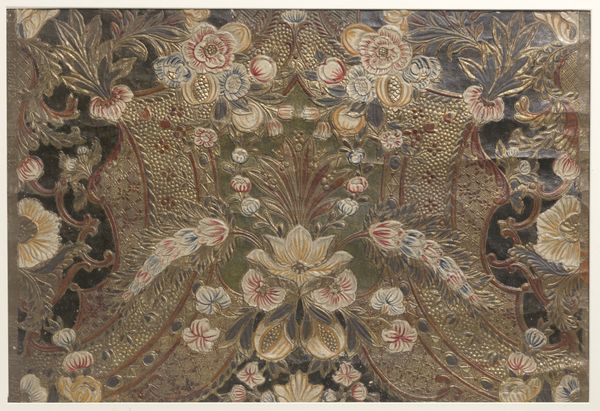
print, textile
# print
#
textile
#
pattern background
#
abstract pattern
#
naive art
#
decorative-art
#
layered pattern
Dimensions: L. 16 x W. 23 1/2 inches 40.6 x 59.7 cm
Copyright: Public Domain
Curator: Here we have "Piece," a printed textile created sometime between 1807 and 1817, and it's currently held at the Metropolitan Museum of Art. What's your initial reaction to this? Editor: It strikes me as both comforting and slightly unsettling. There's a certain coziness to the floral pattern, but the density and somewhat flattened perspective create a visual tension, a controlled chaos. Curator: That’s a fascinating point. It is precisely this tension that made textiles like this so popular. They existed in a space between fine art and domestic life. The textile was a cultural carrier of social and artistic trends. Editor: I see it as a fascinating blend of Romanticism and decorative art. The idealized flowers evoke Romantic sensibilities, while the overall design leans heavily into decorative art. But the tension remains, and I wonder how this fabric participated in and perhaps shaped class dynamics during its time. Curator: Exactly. The cost of such fabrics meant it would likely have been displayed prominently as a status symbol. This textile’s journey through time highlights how accessible artistic expression could become, and, in contrast, it reveals the embedded and historical inequalities. Editor: Considering that textile production was frequently linked to exploitative labor practices, primarily targeting women and children, it is necessary to acknowledge a duality between its aesthetic value and its socio-economic impacts. The fabric seems beautiful, but that obscures an element of social violence that requires further critique and consideration. Curator: Indeed. It reminds us that art and textiles especially don't exist in a vacuum. Examining its historical context, from its manufacturing to its role in society, offers invaluable insights into its complicated, layered meanings. It prompts necessary discourse. Editor: Ultimately, examining "Piece" encourages a critical engagement, prompting conversations on the production of aesthetics, economic systems, and power dynamics woven into even the most ostensibly beautiful patterns. Curator: Well said. It is indeed an invaluable case study bridging art history and contemporary conversations, providing necessary awareness.
Comments
No comments
Be the first to comment and join the conversation on the ultimate creative platform.

